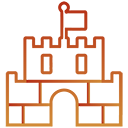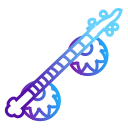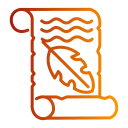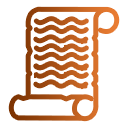TABLA
Type: AVANADDHA VADYA
Tabla is a percussion instrument made of wood, metal, brass, cloth, clay, copper, aluminum, steel, rice, wheat, charcoal powder, plant fiber, iron, nickel, gum, soot, buffalo skin, goatskin, leather, and glue. This is a traditional instrument that is found in various parts of North India. It is an important rhythmic accompaniment to solo and instrumental music ensembles as well as a solo performance instrument.
Tabla is derived from an Arabic word tabl, meaning an instrument facing upwards, with a flat surface or drum. A similar percussion instrument was first seen in a 200 BCE Buddhist carving in Bhaja caves, Maharashtra. Discovered in 1799, it depicted two women, one playing a pair of drums while another dances on its beats.
Tabla has a complex playing technique. It involves extensive use of fingers and palms which produces a wide variety of different sounds and rhythms called mnemonic syllables (bol). It is played in two ways- band bol (tali) and khula bol (khali).
Frequently used as an accompanying instrument for vocal, instrument and dance performances, tabla has lately acquired the status of a solo instrument as well. Its function is to maintain the metric cycle in which music/composition is set. Used in various forms of music- classical music, qawali, bhajan, kirtan, ghazal, folk music, etc.
The most popular percussion instrument of North Indian classical music. Consists of two drums - the ‘bayan’ or the left made of plated copper and the ‘dayan’ or the right made of wood. The left is a small spherical drum resembling the shape of the kettle drum. It is almost the same height as the right but has a much wider playing surface and a smaller bottom compared to the right. The playing surface of both the drums is made of goat skin, stretched across the top. A narrow membrane on the periphery on top of the full membrane is called Kinara or Chanti. The parchment called pudi or chhavani is tied to a plaited strip called ‘gajra’ made of four or five leather braces. Gajra is fixed to the mouth of the drum by means of leather braces called ‘baddhi’, which is tied to another ring at the bottom of the instrument. There are sixteen holes or ‘ghar’ to which the braces are tied at equal distance. In the right drum there are eight tuning blocks or ‘gatta’ which are moved up or down to vary the tension of the pudi. A black paste loaded in layers on the parchment, called syahi. An important rhythmic accompaniment to solo and instrumental music ensembles as well as a solo performance instrument.
TABLA in North India
Material: Wood, Metal, Brass, Cloth, Clay, Copper, Aluminium, Steel, Rice, Wheat, Charcoal Powder, Plant Fiber, Iron, Nickel, Gum, Soot, Buffalo skin, Goat skin, Leather, Glue.
Tabla is a percussion instrument which consists of a pair of drums. It has two single headed drums, with different shapes and sizes. The drum played with the right hand is called dayan whereas the one played with the left hand is called bayan. Both drums are placed on ring shaped holders made of plant fibre covered with cloth, to balance them while playing. The tabla is kept in a slant position away from the players’ body, during performance. Dayan (15 centimetres in length and 6 inches in diameter) is made of wood while bayan (25 centimetres in length and 10 inches in diameter) is made of iron, copper, aluminium, steel or clay. Pudi/chhavani is a sheet made from goat skin, which is stretched across both drums. Pudi is tied to a strip called gajra. Gajra (made by joining leather braces of goat or cow skin) is fixed to the mouth of a drum with leather braces called baddhi. These braces are tied to another ring at the bottom of tabla and further tied to 16 holes (ghar) at equal distance, which gives an equal balance to the instrument at all points. There are eight tuning blocks (gatta), kept beneath each pair of leather bracing, used to tune tabla by moving them up and down. Syahi (seven centimetres in diameter) is a mixture of gum, soot, charcoal powder and iron filings, affixed centrally on dayan and eccentrically on bayan. The range of tune depends on the size of the dayan. Normally tune can be controlled by striking a small hammer on the gajra. Dayan is tuned to the root note (Sa), on which the performance is based.
 Government of India
Government of India

































 Recognizing the ongoing need to position itself for the digital future, Indian Culture is an initiative by the Ministry of Culture. A platform that hosts data of cultural relevance from various repositories and institutions all over India.
Recognizing the ongoing need to position itself for the digital future, Indian Culture is an initiative by the Ministry of Culture. A platform that hosts data of cultural relevance from various repositories and institutions all over India.

